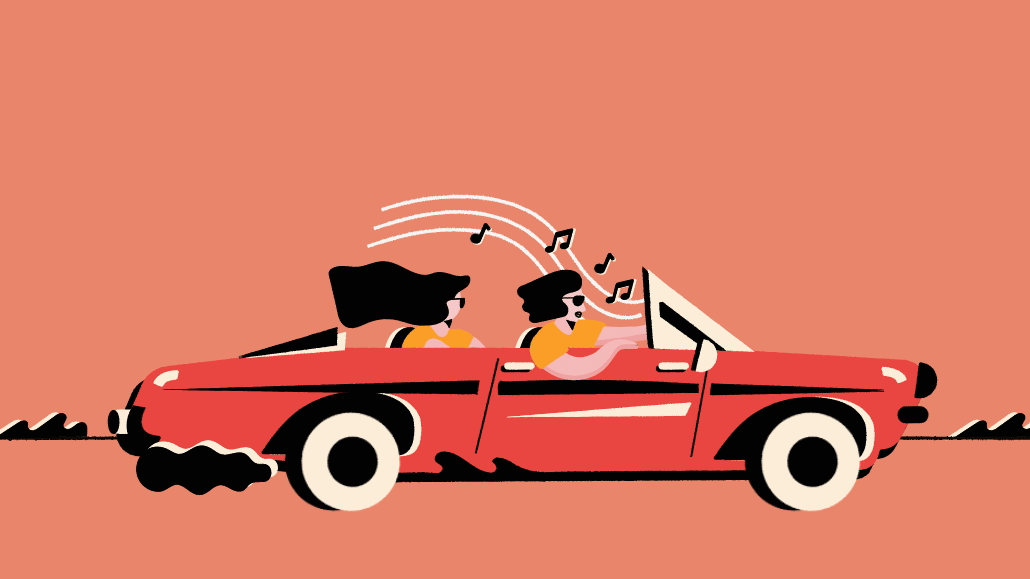Save 50% on a 3-month Digiday+ membership. Ends Dec 5.
‘The pandemic may have served us well’: OAAA’s Anna Bager on out of home’s climb back to revenue growth

Anna Bager knows a thing or two about digital’s potential and pitfalls, having spent her entire career working to promote digital in some form or another — for 10 years at the IAB, and at Ericsson before that. In September 2019, Bager was recruited to lead the Out of Home Advertising Association of America (OAAA) as president and CEO, not long before the pandemic caused the bottom to fall out of out-of-home (OOH) media ad revenue.
According to the agency prognosticators at GroupM, Zenith and MAGNA, OOH is well on the way to recovering and even exceeding its lost revenue. Bager explains why and how the comeback is happening (hint: programmatic plays a big part), along with some predictions on what to expect in 2022 and beyond.
This conversation has been edited for clarity and space.
How is OOH pulling off this resurgence from out of the pandemic?
I’m coming from the IAB and digital, where obviously growth has been massive, but we were starting to see some problems on the horizon. I think the growth parameters [for OOH] were there before the pandemic. Then the pandemic hit, and that first looked like a disaster for the industry, right? No one’s out of their home, and how are you going to sell it? The pandemic may actually have served us well in the end, because it forced the reset and helped drive the development of programmatic. Programmatic is really where most of the deals came from, at least for the national buys. Advertisers and verticals that may not have been as engaged in the past are now coming in. With everything else that’s going on in the world around issues with privacy, brand safety, fraud, cookies going away etc. — I don’t think it’s going to change advertising super drastically, but I do think it’s playing into the hands of out of home.
In the push to omnichannel marketing and measurement, how much does OOH remain an outlier?
It depends on the advertiser, right? There are advertisers fully embracing out of home and are deep in and treating it as part of a broader multi-channel strategy. Then there’s a lot of advertisers that see us as a medium for building brand, launching a product, creating a spectacle, whatever it might be. I think the connection between social and out of home is huge. We’ve seen that recently with music launches, such as Adele’s launch of her 30 album or the Drake album that just launched. They’re buying some really well-thought-through billboards or other types of out-of-home inventory to drive awareness, and then that transports into social media. Especially when you’re working through celebrities, you get their followers as well. It’s the kind of glue that can tie all your creative together and create a lot of efficiencies in your media buy as well.
Ad position: web_incontent_pos1
What’s the biggest challenge OOH needs to overcome? What are the potholes ahead?
As we are building for the future and changing our medium, the way it’s being transacted and the way it’s being presented, we need to try and avoid some of the problems that exist within digital. They easily can get there when you start transacting more programmatically, or when your CPMs go up. All of a sudden [there’s] an interest in our industry that could hurt us. It’s being protective of what we have, protect[ing] the value while growing, and making sure that we’re not falling into some of the same pitfalls that “traditional” digital [went through]. We want to keep the value chain reasonably clear, and not add a lot of vendors that increase the cost and confuse [the marketplace].
What do you expect from the agency community?
Smart advertisers should have out of home as part of their strategy. And therefore agencies need to lean in more on understanding how out of home fits within a broader media buy —what it can do, what it can’t do. These specialist agencies within the holding companies, and some of the smaller out-of-home [shops], they know the medium well, they understand the strengths and can cater to it. I think it’s more about leaning in with us as we’re creating the standards, letting us know how they want to buy and sell. I’m very encouraged by [the fact that] some of the leaders of the out-of-home specialist groups are getting more immersed in the broader holding company structure. I think that can be really good for our media.
What are your predictions for 2022?
Ad position: web_incontent_pos2
I’m a big believer in commerce. That big ad for a musical artist or a fashion brand or something on the [Las Vegas] Strip or in Times Square gets seen by someone who posts it, then gets shared by millions. Now with social listening, you could see where people are listening to this message. Through programmatic, you can then push that message back out into local markets to reinforce the ad and even add commerce opportunities through QR codes or other ways of engaging with consumers.
More in Media

Digiday+ Research Subscription Index 2025: Subscription strategies from Bloomberg, The New York Times, Vox and others
Digiday’s third annual Subscription Index examines and measures publishers’ subscription strategies to identify common approaches and key tactics among Bloomberg, The New York Times, Vox and others.

From lawsuits to lobbying: How publishers are fighting AI
We may be closing out 2025, but publishers aren’t retreating from the battle of AI search — some are escalating it, and they expect the fight to stretch deep into 2026.

Media Briefing: Publishers turn to vertical video to compete with creators and grow ad revenue in 2026
Publishers add vertical video feeds to their sites to boost engagement, attract video ad spend and compete with news creators.
Ad position: web_bfu



